3.3 — The Diamond Hypothesis
ECON 317 • Economic Development • Fall 2021
Ryan Safner
Assistant Professor of Economics
safner@hood.edu
ryansafner/devF21
devF21.classes.ryansafner.com
Guns, Germs, and Steel
Guns, Germs, and Steel I
- Why are some countries poor and others rich?

Yali's Question (to Diamond) I

Guns, Germs, and Steel (PBS)
"The conversation remained friendly, even though the tension between the two societies that Yali and I represented was familiar to both of us. Two centuries ago, all New Guineans were still "living in the Stone Age." That is, they still used stone tools similar to those superseded in Europe by metal tools thousands of years ago, and they dwelt in villages not organized under any centralized political authority. Whites had arrived, imposed centralized government, and brought material goods whose value New Guineans instantly recognized, ranging from steel axes, matches, and medicines to clothing, soft drinks, and umbrellas. In New Guinea all these goods were referred to collectively as "cargo," (p.14).
Diamond, Jared, 1999, Guns, Germs, and Steel: The Fates of Human Societies
Yali's Question (to Diamond) II

Guns, Germs, and Steel (PBS)
"[H]e asked me, "Why is it that you white people developed so much cargo and brought it to New Guinea, but we black people had little cargo of our own?" (p.14)
Diamond, Jared, 1999, Guns, Germs, and Steel: The Fates of Human Societies
Cargo Cults
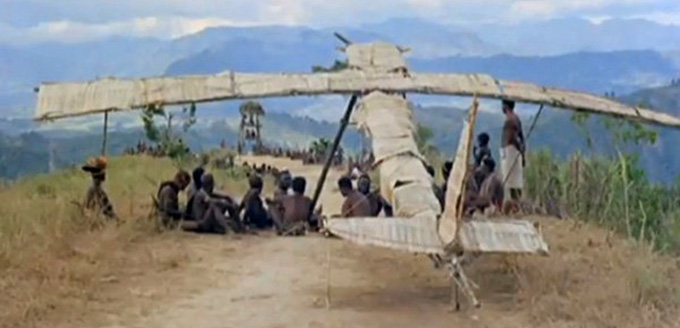
Guns, Germs, and Steel II
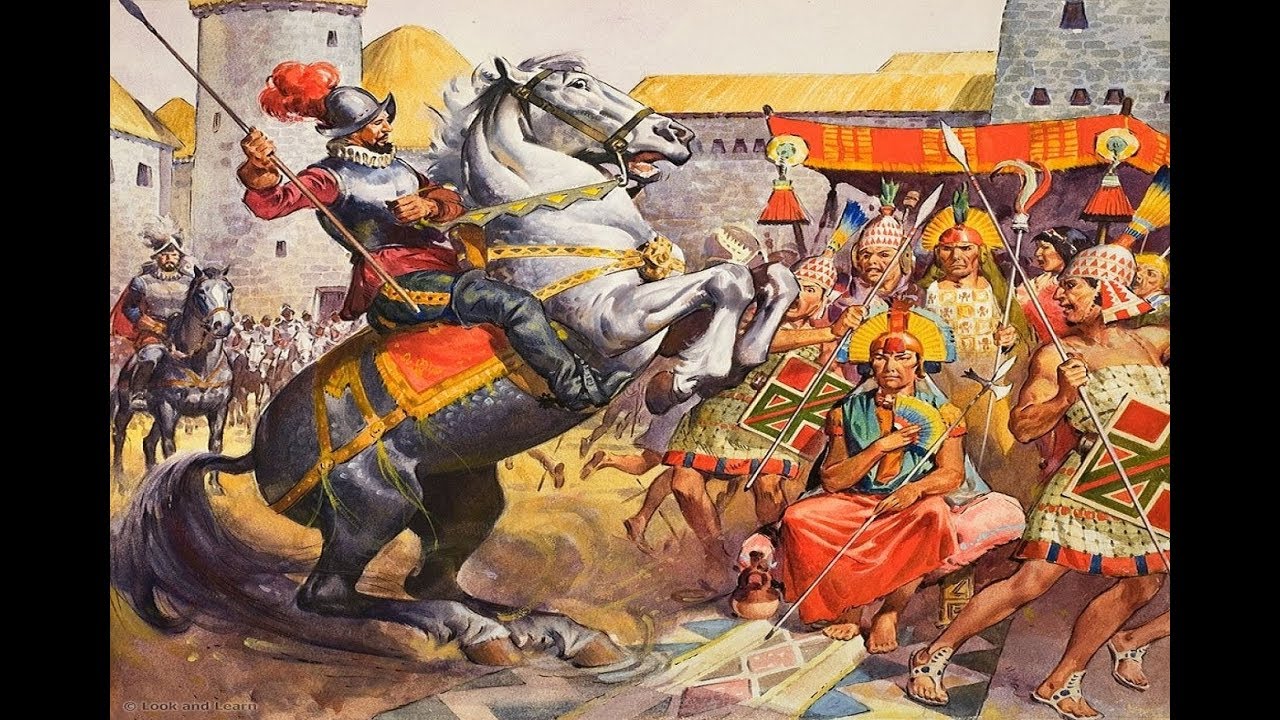
Franscisco Pizarro's conquest of the Incan Empire
Guns, Germs, and Steel II
Europeans colonized the rest of the world because they had "guns, germs, and steel"
Why did (Western) Eurasia develop first, not Africa, North America, South America, or Oceania?

Domesticable Animal Species I
Surprisingly few species of animals are domesticable
"The major 5":
- Cattle (Cow, Ox)
- Horses
- Sheep
- Pigs
- Goats
"The minor 9": Arabian camel, Bactrian camel, Llama and Alpaca, Donkey, Reindeer, Water Buffalo, Yak, Bali cattle, Mithun cattle

Independent Origins of Agriculture and Civilization

Diamond (1999: p. 99)
Diamond, Jared, 1999, Guns, Germs, and Steel: The Fates of Human Societies
Domesticable Animal Species II
The wild ancestors of these 14 animal species were not evenly distributed across the world
Sub-Saharan Africa: 0
North and South America: 1
Eurasia: 13
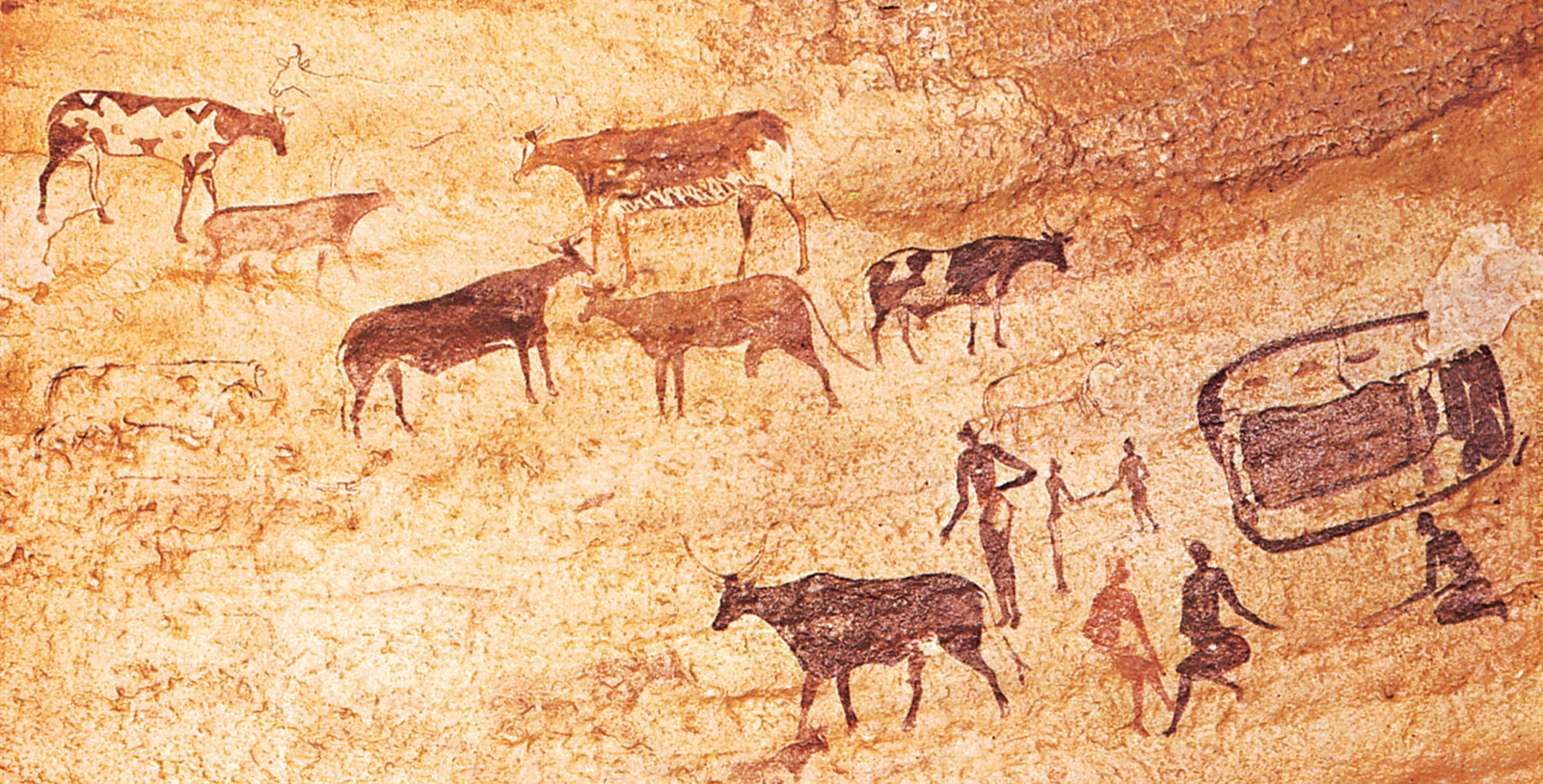
Are These The Only Domesticable Animals?
Clear demand for domestication: these have been domesticated independently around the world several times
Rapid use of these animals when introduced to a non-indigenous area
Many animals cannot be domesticated (temperament, diet, inefficient food/power ratio, lack of herd, breeding problems)

What's Important About Domesticated Animals?
Nutrition: source of milk and meat
Supplies: leather, clothing, shelter
Power Source: particularly for agriculture (plowing)
Military: mounted cavalry

Domesticable Animal Species
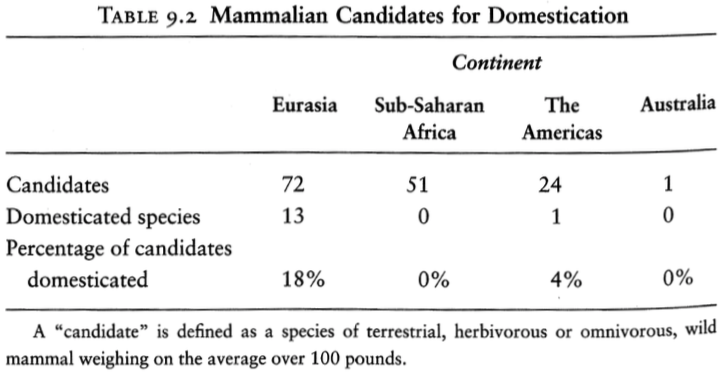
Diamond (1999: p. 162)
Diamond, Jared, 1999, Guns, Germs, and Steel: The Fates of Human Societies
Domesticable Plant Species I
Today, wheat and rice account for 41% of all total calories consumed in the world
- Wheat (originally from Fertile Crescent)
- Rice (originally from China)
Wheat, rice, barley, sorghum, and corn are the top 5 crops
- indigenous ancestors are very close to the modern domesticated version
- EXCEPT for corn — wild maize in Meso-America is very different, took longer to domesticate
Other plants surprisingly hard to domesticate

Domesticable Plant Species II
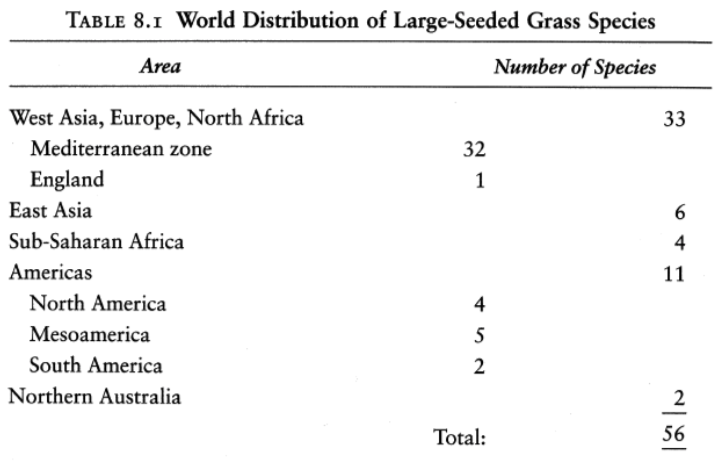
Diamond (1999: p. 140)
Diamond, Jared, 1999, Guns, Germs, and Steel: The Fates of Human Societies
Variation and Spread of Species I
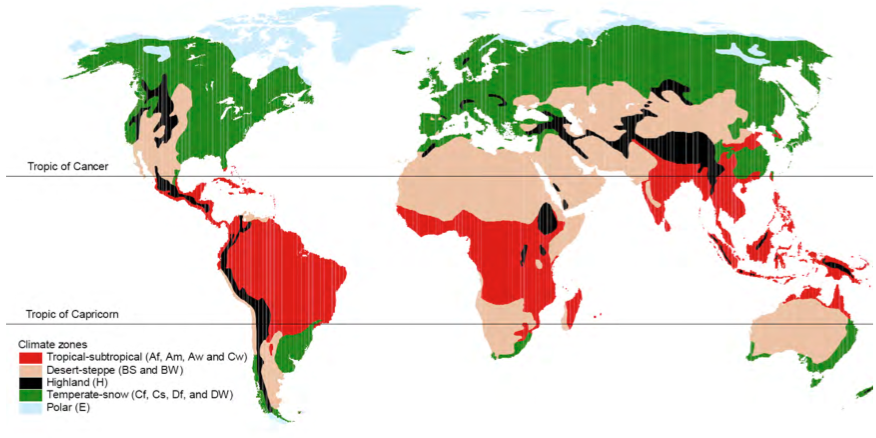
Sachs, Jeffrey, (2000), "Tropical Underdevelopment." CID Working Paper No. 57.
Variation and Spread of Species II
Before ocean-going ships, domesticable species cannot easily traverse different climates
Easier to spread across latitude (E/W) than longitude (N/S)
Societies across the same latitude have access to more species
Ideas, best practices, and technology can more easily spread East-West than North-South
- More species, specialization, division of labor, innovation

Variation and Spread of Species III
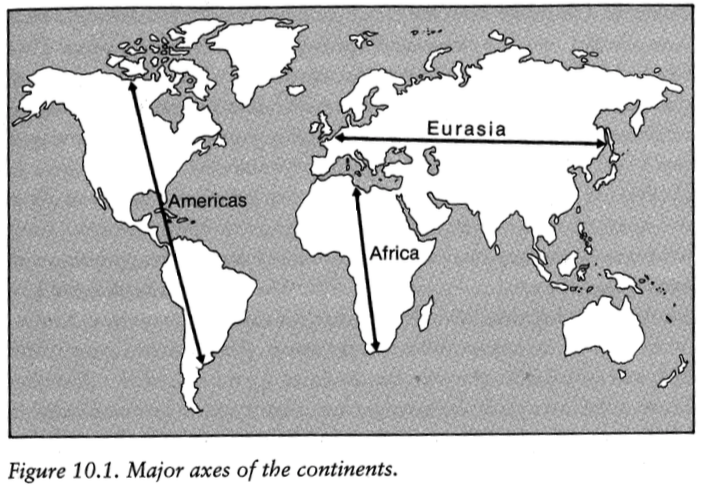
Diamond (1999: p. 177)
Diamond's Argument I
Regions of the world with access to more species (Eurasia) ...
... develop agriculture earlier ...
... leading to cities and civilization ...
... which acquires and adopts technology sooner ...
... and gets "guns, germs, and steel"
Diamond, Jared, 1999, Guns, Germs, and Steel: The Fates of Human Societies
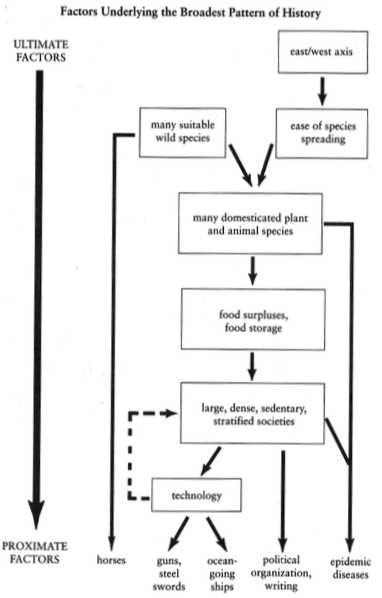
Guns and Steel

So how can 168 men with a few guns and horses conquer a 10,000,000 person empire?
Germs
- In 1520, it took one sick person to bring smallpox to South America, where it may have killed 90% of the population

Germs II
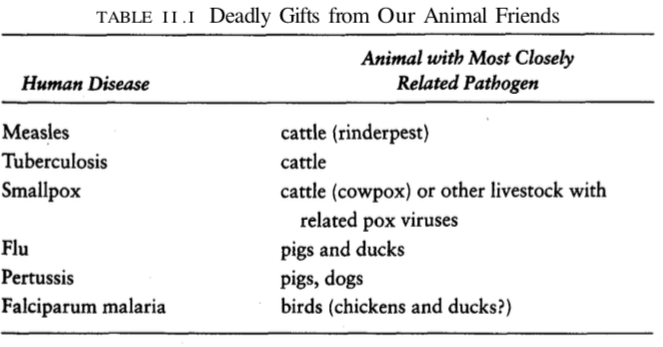
Diamond (1999: 207)
Diamond, Jared, 1999, Guns, Germs, and Steel: The Fates of Human Societies
Germs III
Europeans lived in extremely close proximity to their domesticated animals
Repeatedly decimated by these diseases
Evolved some immunity to them
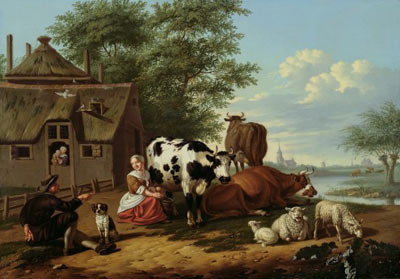
Germs IV

John Winthrop
(1587-1649)
3rd Governor of Massachusetts Bay Colony
"But for the natives in these parts, God hath so pursued them, as for 300 miles space the greatest part of them are swept away by the smallpox which still continues among them. So as God hath thereby cleared our title to this place, those who remain in these parts, being in all not 50, have put themselves under our protection."
Germs V

James I, King of England
(1566-1625)
"Almighty God in his great goodness and bounty towards us [for sending] this wonderful plague among the savages."
Assessing Diamond

Jared Diamond
(1937-)
One of the most influential books of the last 30 years, especially among general public
A great (great) big-picture story
Is it testable??
Geography and the “Deep Roots” of Development
The "Deep Roots" of Development I
Literature on "deep roots" of development with really provocative titles (and implications)
Many aspects to this literature:
- “state history”
- culture
- migration (origins)
- technology adoption
We will focus on the role of geography in economic development

The "Deep Roots" of Development II
- Main question:
How much of variation in GDP per capita TODAY can we explain by unchangable geographic factors?

The "Deep Roots" of Development II
Main question:
How much of variation in GDP per capita TODAY can we explain by unchangable geographic factors?
Answer: a surprising amount.

Geography and Economic Development I

Spolaore, Enrico and Romain Wacziarg, 2013, "How Deep Are the Roots of Economic Development?" Journal of Economic Literature 51(2): 1-45
Geography and Economic Development II
"In order to reduce the effect of post-1500 population movements, the Olsson–Hibbs sample excludes the neo-European countries (Australia, Canada, New Zealand, and the United States), as well as countries whose current income is based primarily on extractive wealth. Column 2 replicates the estimates of column 1 using this restricted sample—the joint explanatory power of geographic variables rises to 55 percent, since the new sample excludes regions that are rich today as a result of the guns, germs, and steel of colonizing Europeans rather than purely geographic factors," (p.5).
Spolaore, Enrico and Romain Wacziarg, 2013, "How Deep Are the Roots of Economic Development?" Journal of Economic Literature 51(2): 1-45
Olsson, Ola, and Douglas A. Hibbs Jr, 2005, "Biogeography and Long-Run Economic Development," European Economic Review 49(4): 909-938
Geography and Economic Development III
These empirical results provide strong evidence in favor of Diamond’s hypotheses, while suggesting that the geographic component of the story is empirically more relevant than the biological component. Column 6 goes further in the attempt to control for the effect of post-1500 population movements, by restricting the sample to the Old World (defined as all countries minus the Americas and Oceania). The effect of geography now rises to 64 percent—again highly consistent with Diamond’s idea that biogeographic conditions matter mostly in the Old World," (p.5).
Spolaore, Enrico and Romain Wacziarg, 2013, "How Deep Are the Roots of Economic Development?" Journal of Economic Literature 51(2): 1-45
Geography and Economic Development IV
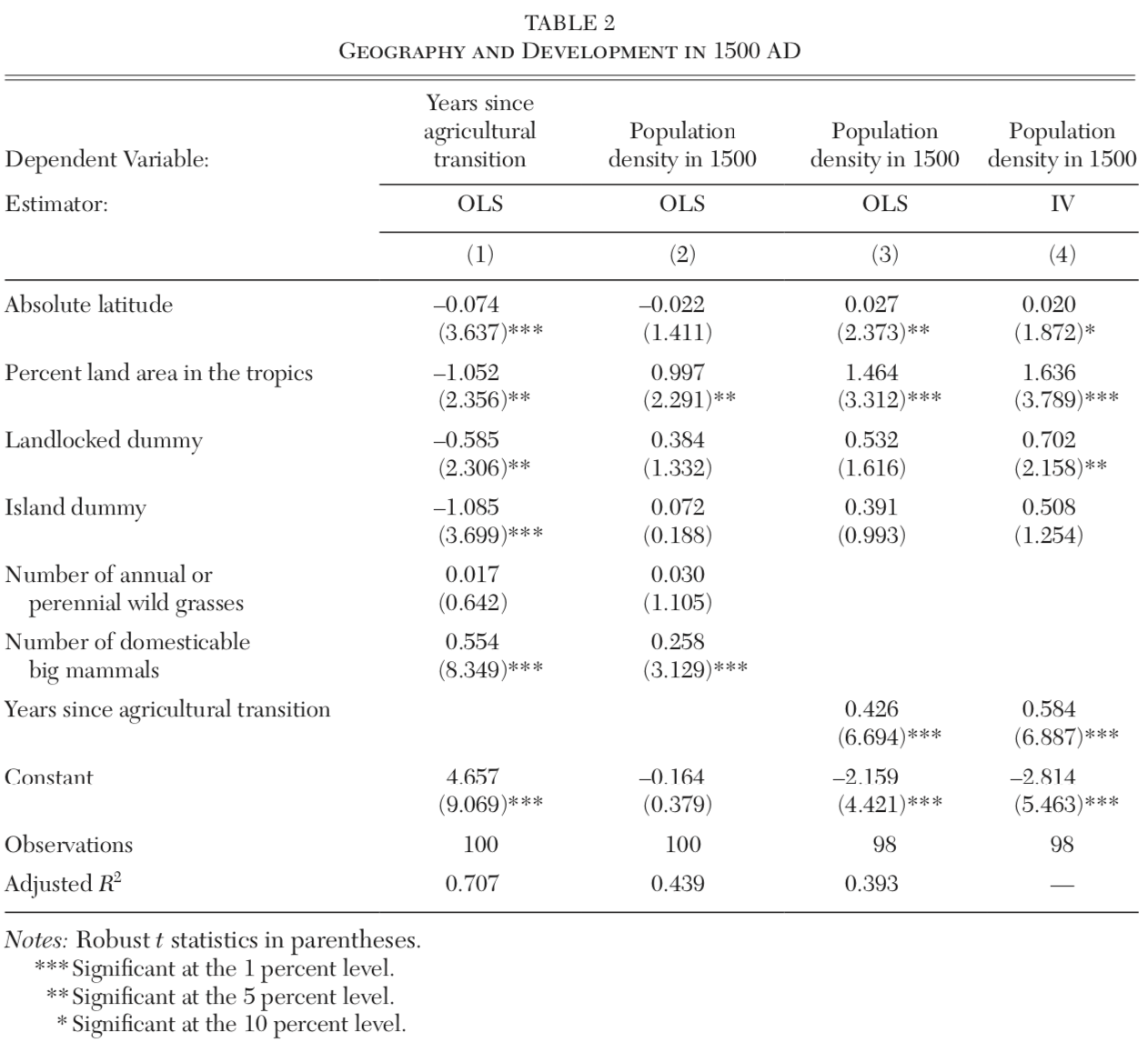
Spolaore, Enrico and Romain Wacziarg, 2013, "How Deep Are the Roots of Economic Development?" Journal of Economic Literature 51(2): 1-45
Geography and Economic Development V
While geographic factors may have continued to affect economic development after the introduction of agriculture, the availability of prehistoric domesticable wild plant and animal species did not influence population density in the past two millennia other than through the timing of the Neolithic transition...The results of column 3 (OLS) and column 4 (IV) of table 2 illustrate their findings: years since the agricultural transition has a strong, statistically significant positive effect on population density in 1500...The magnitude of the effect is large, as a one standard deviation change in years of agriculture is associated with 63 percent of a standard deviation change in log population density in 1500 (OLS)..All of the other regressors feature much smaller standardized effects.
They show, not only that an earlier onset of the Neolithic transition contributed to the level of technological sophistication in the preindustrial world, but also that the effect of Diamond’s biogeographic factors may well operate through the legacy of an early exposure to agriculture," (pp.7-8).
Spolaore, Enrico and Romain Wacziarg, 2013, "How Deep Are the Roots of Economic Development?" Journal of Economic Literature 51(2): 1-45
Population Density in 1500
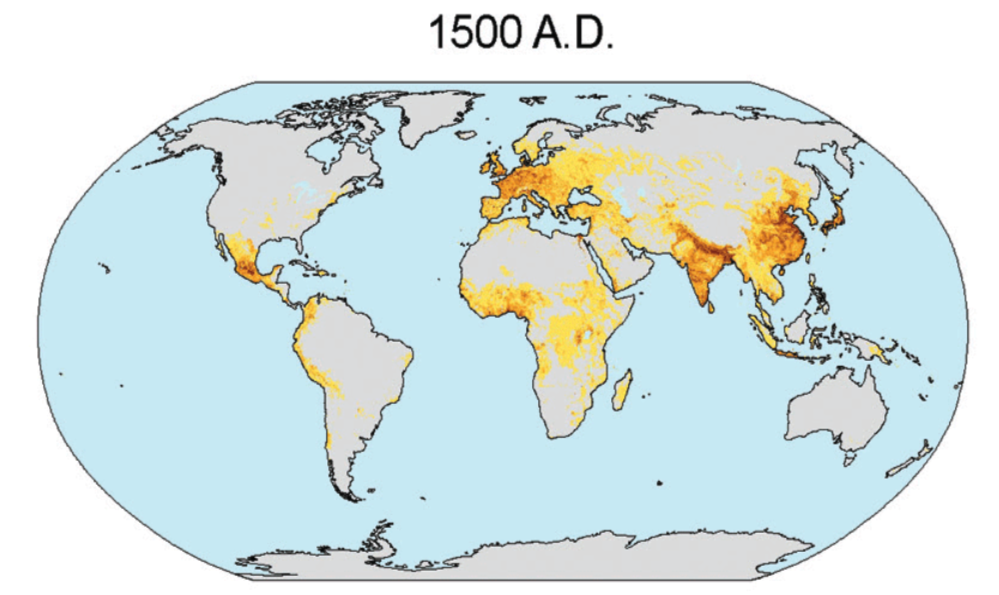
Gallup, J. L., J. D. Sachs, and A. D. Mellinger, 1999; Wikipedia; A Great Interactive Version
Aside: Population Density as Proxy for Development
Population density is a good proxy for economic development
Better than wages or real incomes
Malthusian dynamics of a pre-modern economy
- More prosperous regions have high population ⟹ lowers real wages
Population is also easier to measure and get data for than real wages!
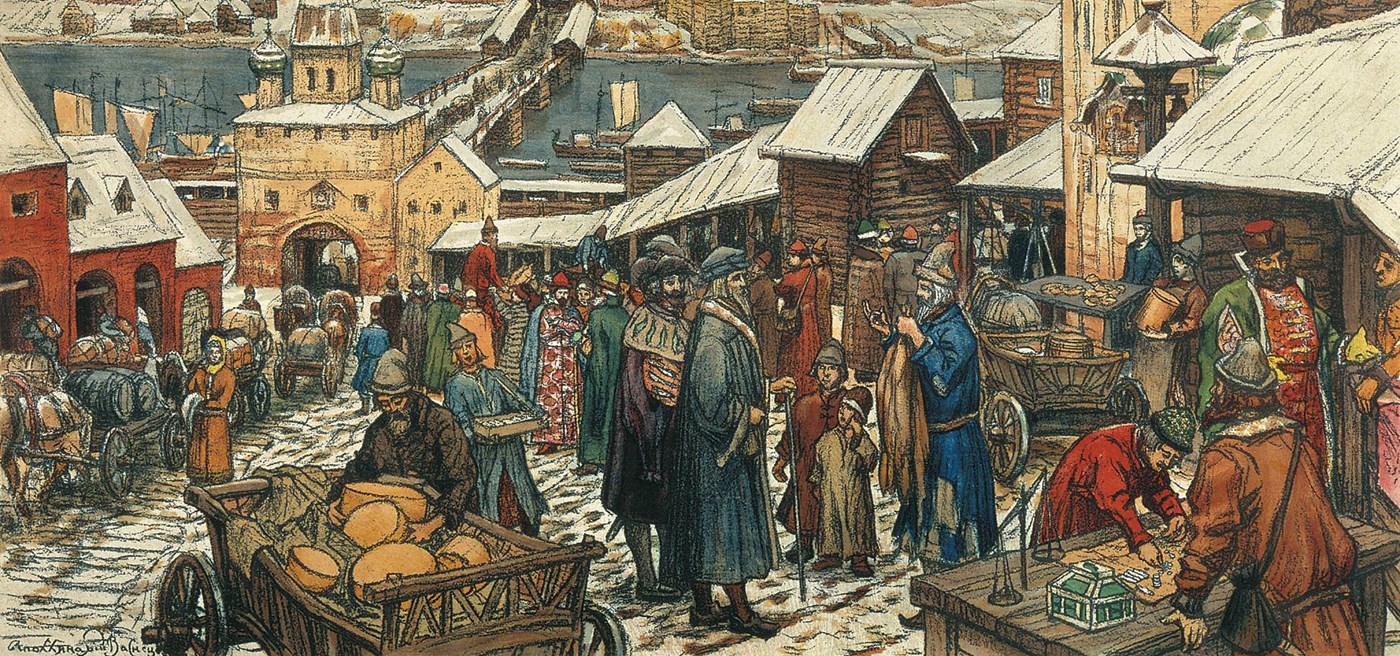
Population Density Since 3000 B.C.

Deep Roots, Tech. Adoption, & Urbanization

Comin, Diego, William Easterly, and Erick Gong, (2010), "Was the Wealth of Nations Determined in 1000 BC?" American Economic Journal: Macroeconomics 2: 65-97
Deep Roots, Tech. Adoption, & Urbanization

p. 64
“1500 AD technology is a particularly powerful predictor of per capita income today. 78 percent of the difference in income today between sub-Saharan Africa and Western Europe is explained by technology differences that already existed in 1500 A.D. – even BEFORE the slave trade and colonialism...Moreover, these technological differences had already appeared by 1000 BC. The state of technology in 1000 BC has a strong correlation with technology 2500 years later, in 1500 AD.” - Easterly, blog post about paper
Comin, Diego, William Easterly, and Erick Gong, (2010), "Was the Wealth of Nations Determined in 1000 BC?" American Economic Journal: Macroeconomics 2: 65-97
Deep Roots, Tech. Adoption, & Urbanization
“The main finding of this paper is a simple one. Technology in 1500 AD is associated with the wealth of nations today. This is robust to including continent dummies and geographic controls, so it is not just driven by “Europe versus Africa” or “ tropical versus temperate zones.” There are two notable parts of the finding. The first is that technology as old as 1500 AD is a historical correlate of development when we consider that most historical discussions of developing countries start with post-1500 European contact and colonization. The second notable aspect of our finding is that the magnitude of the association between historical technology adoption and current development is nontrivial. In our baseline specification for migration-adjusted technology, going from having none to having adopted all the technologies available in 1500 AD is associated with an increase in current per capita GDP by a factor of 26. More realistically, after including a battery of controls, this multiple is still between 5.9 and 13.3.”
“In an effort toward understanding what drives this correlation, we have found suggestive results that technology is very persistent, that this persistence is not driven only by the persistence of population, and that it does not disappear when calculated only within sectors after removing the country average adoption level in the period and country-sector fixed effects (hence, controlling for any factors that operate at a country-wide level such as institutions). This evidence provides support to the hypothesis that the technology adoption dynamics, in which the cost of adopting new technology falls with the stock of previous technology, are one of the mechanisms that generates the propagation uncovered in the data,” (p.94).
Comin, Diego, William Easterly, and Erick Gong, (2010), "Was the Wealth of Nations Determined in 1000 BC?" American Economic Journal: Macroeconomics 2: 65-97
Geography’s Mechanisms: Trade & Health
Geography's Mechanisms
How, specifically does geography impact economic development?
In the language of the literature, and econometrics, what are the specific mechanisms or channels by which (good/bad) geography leads to (high/low) growth?
(At least) three major ones:
- Trade (market access/division of labor)
- Health
- Institutions
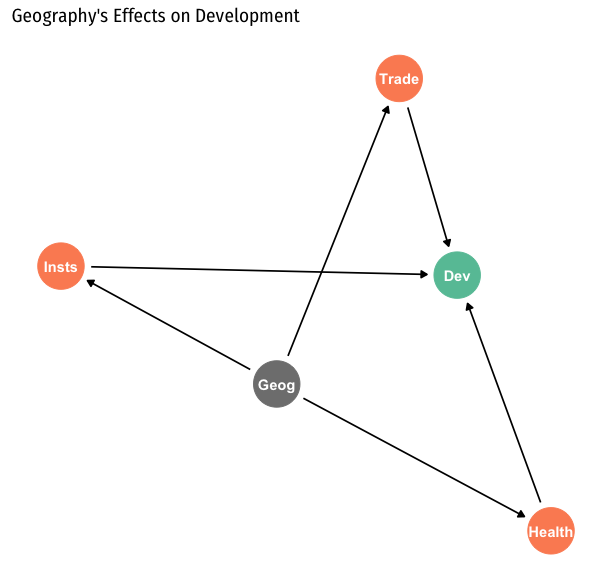
Geography and Trade/Market Access
DOL Is Limited By the Extent of the Market

Adam Smith
1723-1790
"As it is the power of exchanging that gives occasion to the division of labour, so the extent of this division must always be limited by...the extent of the market. When the market is very small, no person can have any encouragement to dedicate himself entirely to one employment, for want of the power to exchange all that surplus part of the produce of his own labour, which is over and above his own consumption, for such parts of the produce of other men's labour as he has occasion for," (Book I, Chapter 3).
Smith, Adam, 1776, An Enquiry into the Nature and Causes of the Wealth of Nations
Access to Markets Increases Productivity
Division of labor: process where people specialize in production and then exchange their produce with others to acquire all of their desired goods
The more trading opportunities, the greater the benefits of specialization
Romer (1990) model predicts increasing returns to market access (through human capital and knowledge production)
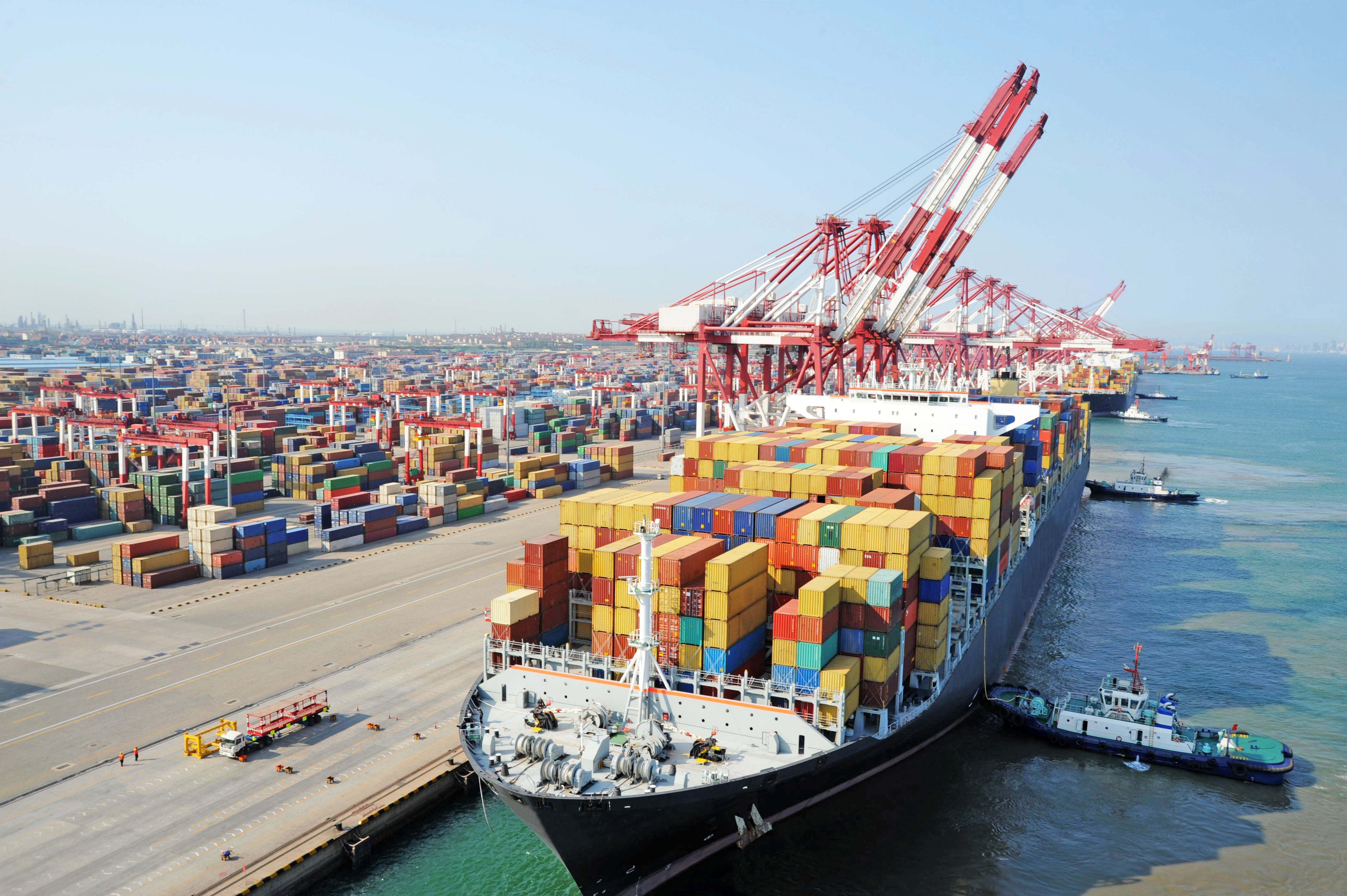
Geography & Market Access

Adam Smith
1723-1790
"As by means of water carriage a more extensive market is opened to every sort of industry than what land carriage alone can afford it, so it is upon the sea-coast, and along the banks of navigable rivers that industry of every kind begins to sub-divide and improve itself, and it is frequently not till a long time after that those improvements extend themselves to the inland part of the country," (Book I, Chapter 1)
Smith, Adam, 1776, An Enquiry into the Nature and Causes of the Wealth of Nations
Geography & Market Access: Today

Gallup, J. L., J. D. Sachs, and A. D. Mellinger, 1999, "Geography and Economic Development," International Regional Science Review 22(2):179-224; Land of Maps
Access to Coastline and Navigable Rivers I
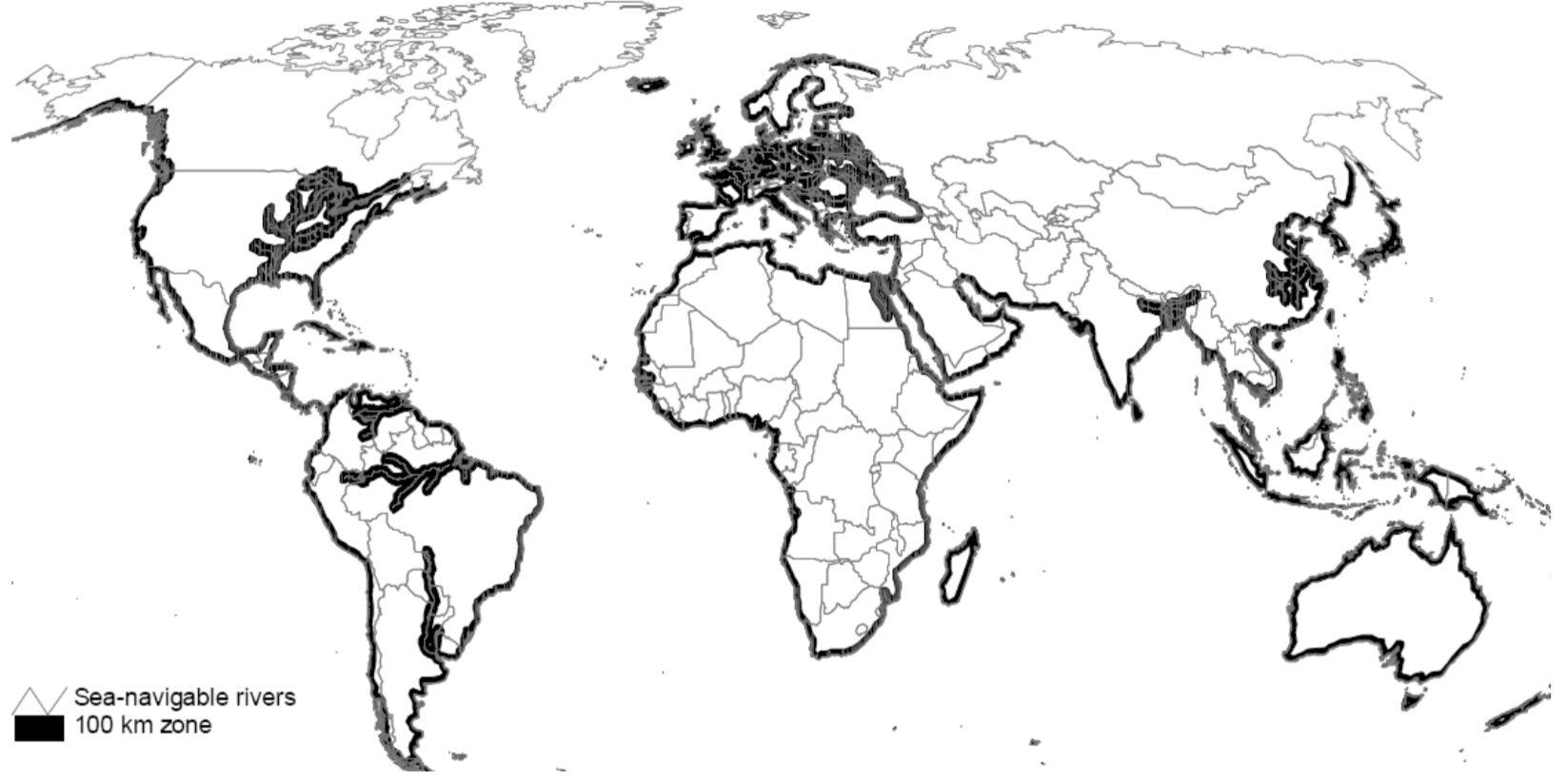
Mellinger, Andrew D., Jeffrey Sachs, and John L. Gallup, (1999), "Climate, Water Navigability, and Economic Development," CID Working Paper No. 24
Access to Coastline and Navigable Rivers II


Mellinger, Andrew D., Jeffrey Sachs, and John L. Gallup, (1999), "Climate, Water Navigability, and Economic Development," CID Working Paper No. 24
Access to Coastline and Navigable Rivers III
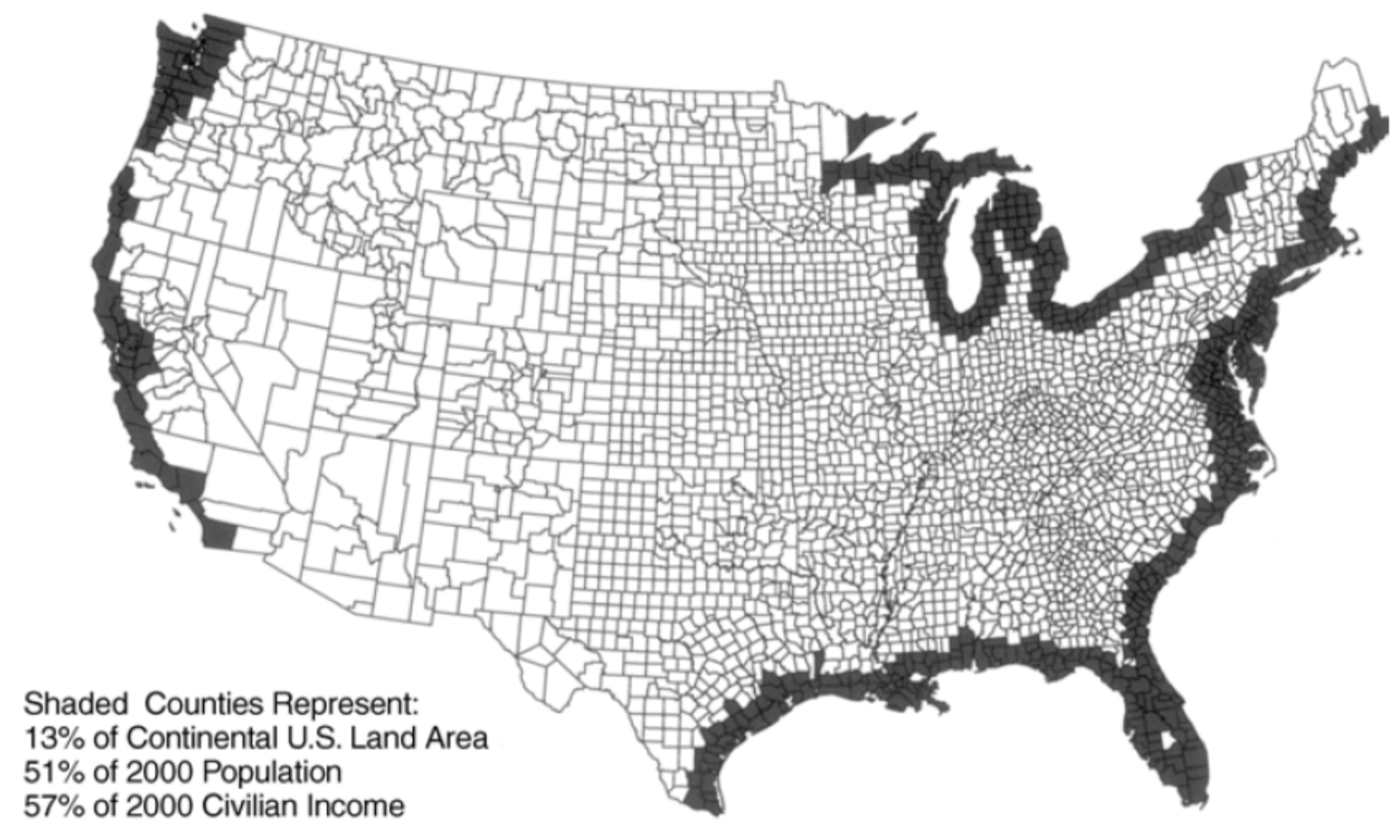
Rappaport, Jordan, and Jeffrey Sachs, (2003), "The United States as a Coastal Nation," Journal of Economic Growth 8(1):5-46
Access to Coastline and Navigable Rivers IV
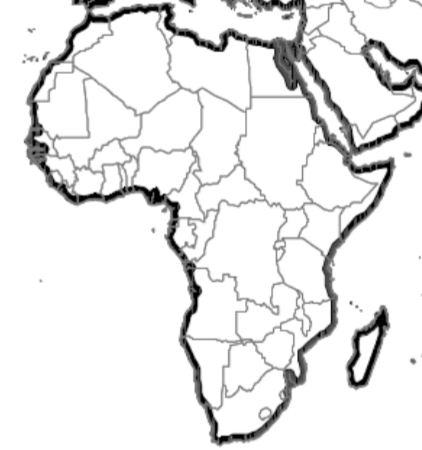
Mellinger, Andrew D., Jeffrey Sachs, and John L. Gallup, (1999), "Climate, Water Navigability, and Economic Development," CID Working Paper No. 24
Geography & Market Access: Africa

Adam Smith
1723-1790
"All the inland parts of Africa, and all that part of Asia which lies any considerable way north of the Black and Caspian Seas...seem in all ages of the world to have been in the same barbarous and uncivilized state in which we find them at present..."
"There are in Africa none of those great inlets...to carry maritime trade into the interior parts of that great continent...," (Book I, Chapter 1)
Smith, Adam, 1776, An Enquiry into the Nature and Causes of the Wealth of Nations
Distorted Views of Africa: Mercator
Better Views of Africa: Mollweide
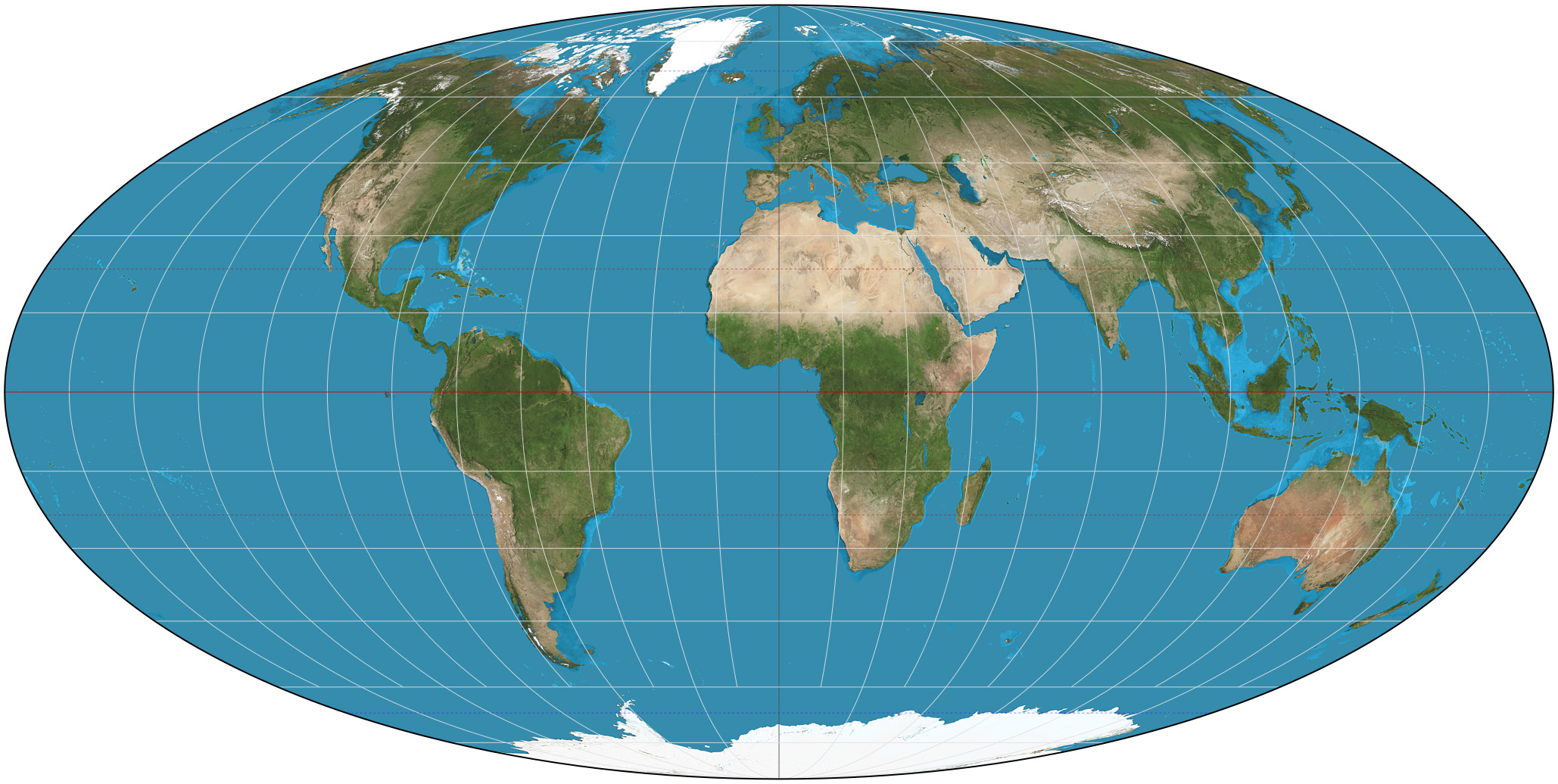
Africa is Huge
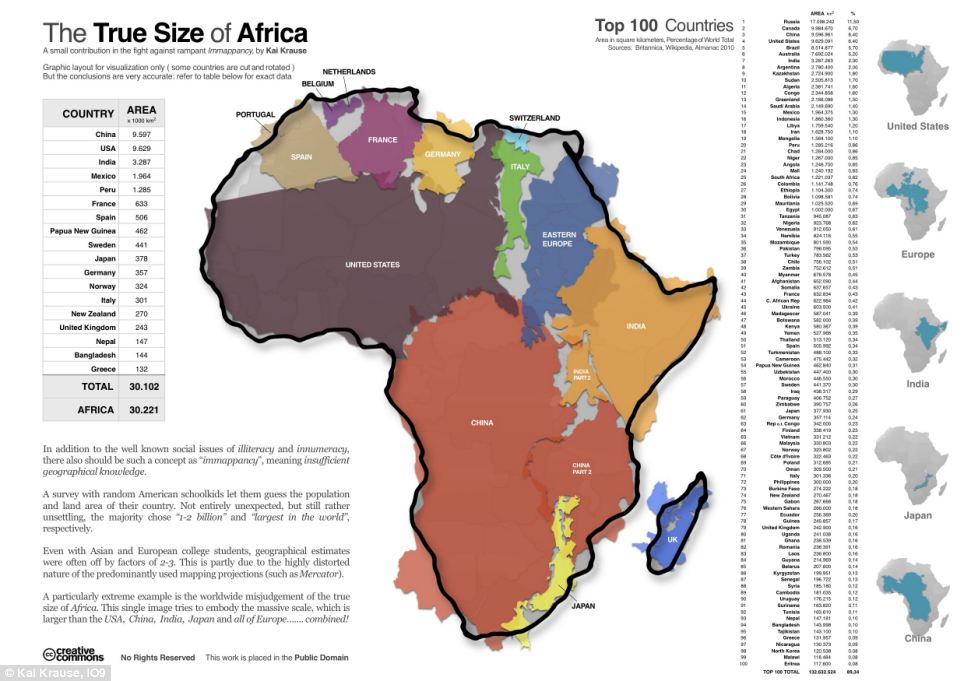
Most Landlocked Countries in Africa
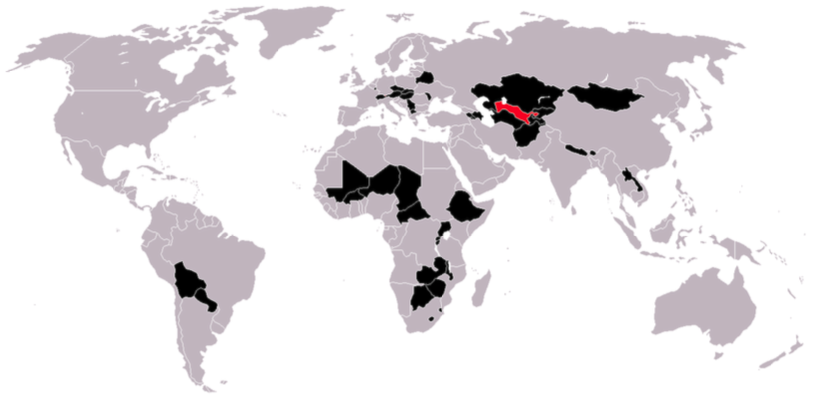
Lack of Market Access Hurts Development
“Location and climate have large effects on income levels and income growth through their effects on transport costs, disease burdens, and agricultural productivity, among other channels. Geography also seems to affect economic policy choices. Many geographic regions that have not been conducive to modern economic growth have high population densities and are experiencing rapid increases in population. At particular disadvantage are regions located far from coasts and ocean-navigable rivers, for which the transport costs of international trade are high, and tropical regions, which bear a heavy burden of disease. Moreover, a large portion of population growth over the next thirty years is expected to occur in these geographically disadvantaged regions.”
Lack of Market Access Hurts Development

Gallup, John Luke, Jeffrey D. Sachs, and Andrew D. Mellinger, 1999, "Geography and Economic Development," International Regional Science Review 22(2): 179-232
Relationship Between Latitude & Development
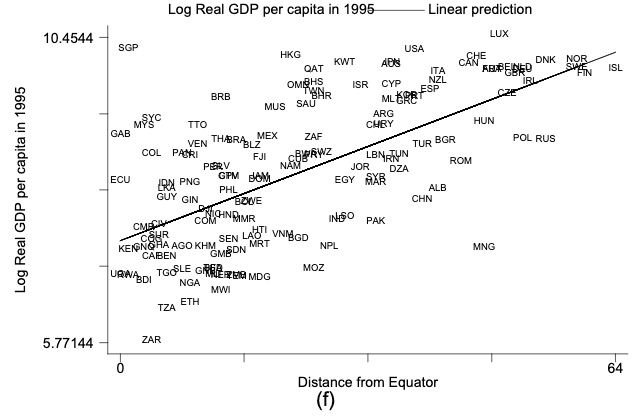
Rodrik, Dani, Arvind Subramanian, and Francesco Trebbi, 2002, "Institutions Rule: The Primacy of Institutions Over Geography and Integration in Economic Development," NBER Working Paper 9305
Geography and Health
Geography and Development: Disease I
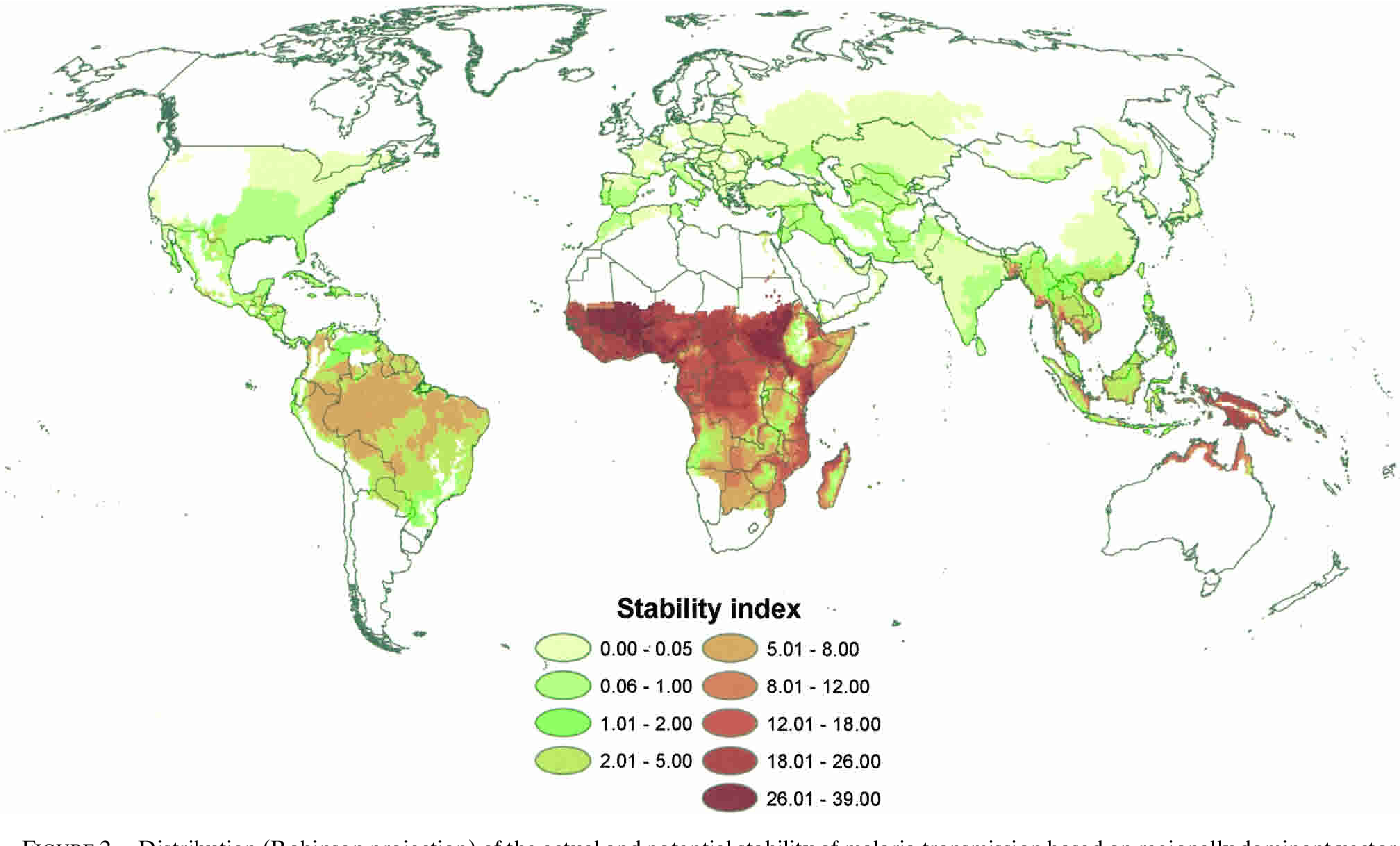
Kiszewski, Anthony E, Andrew Mellinger, Andrew Spielman, Pia Nandini Malaney, Sonia Ehrlich Sachs, and Jeffrey Sachs, (2004), "A Global Index Representing the Stability of Malaria Transmission", American Journal of Tropical Medicine Hygiene 70(5): 486-498
Compare: Population Density
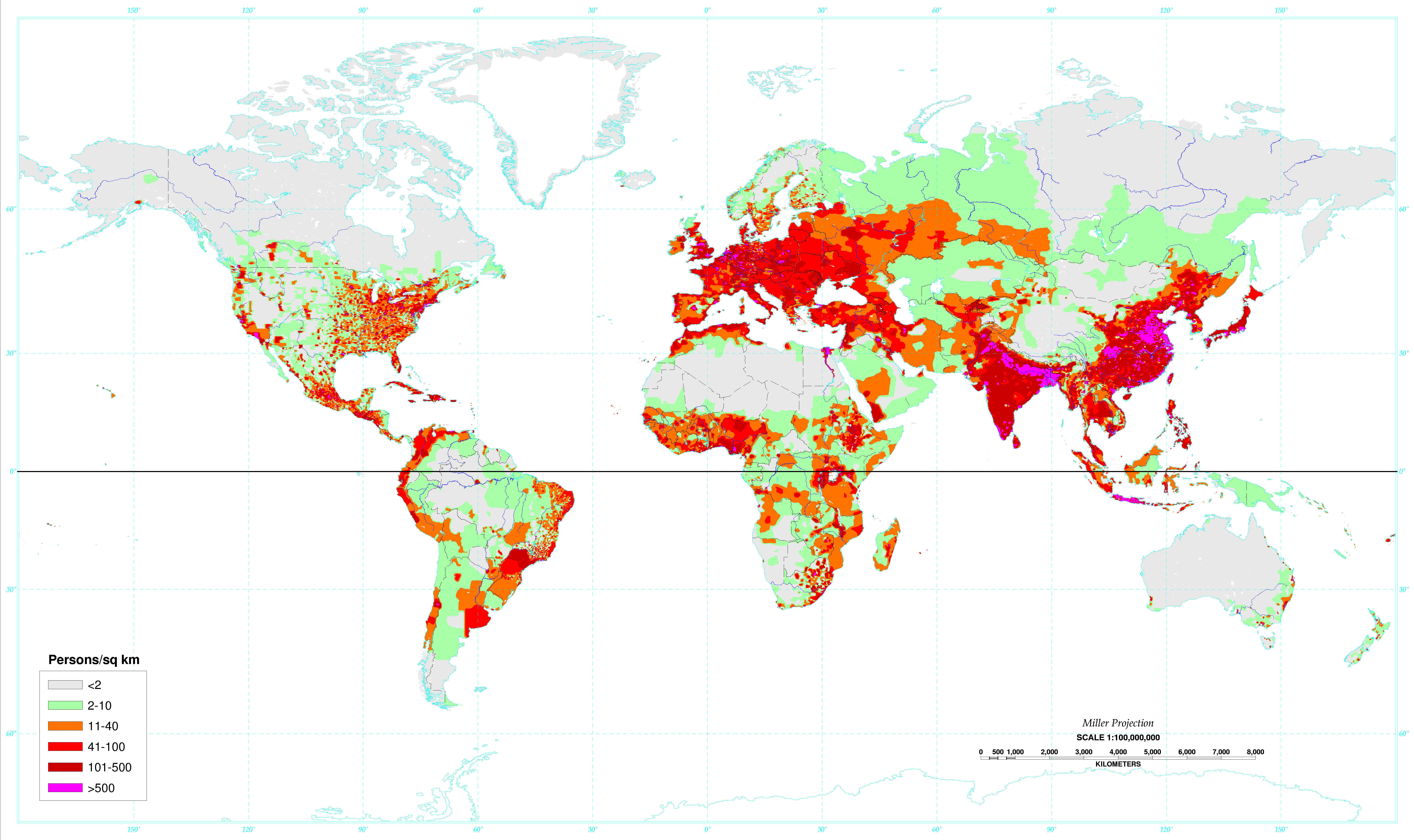
Gallup, J. L., J. D. Sachs, and A. D. Mellinger, 1999; Wikipedia; A Great Interactive Version
Compare: GDP Density

Gallup, J. L., J. D. Sachs, and A. D. Mellinger, 1999, "Geography and Economic Development," International Regional Science Review 22(2):179-224; Land of Maps
Geography and Development: Disease I
Strong inverse relation between locations with population & GDP density and malaria transmission stability
300-500 million people get malaria each year
- 1 million die (often young children)
- children's growth and IQ can be permanently stunted
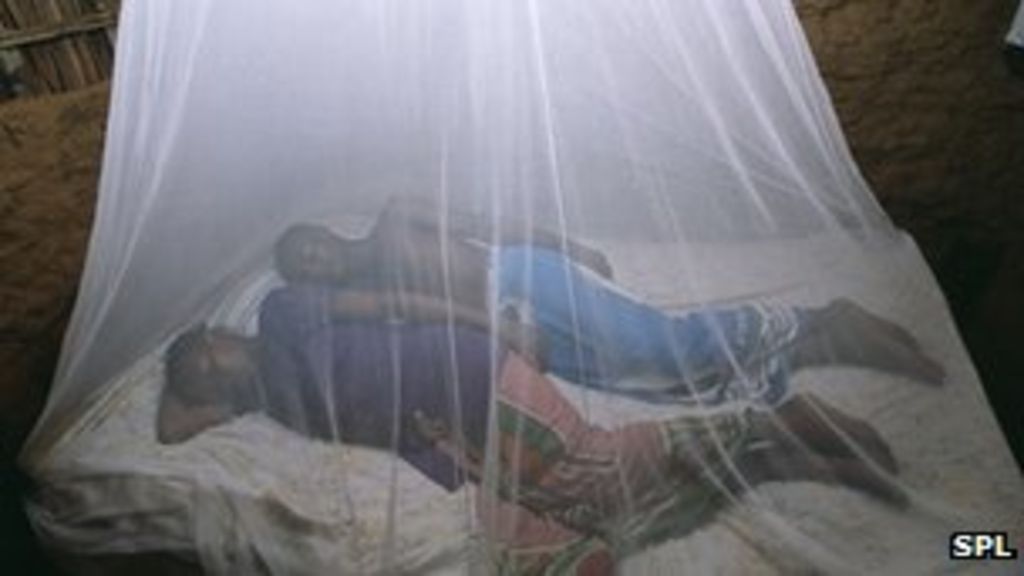
Geography and Development: Disease II
- A lot of diseases are more common in the tropics:
- malaria
- yellow fever
- chagas disease
- African trypanosomiasis (sleeping sickness)
- River blindness
- Schistosomiasis (snail fever)
- parasitic worms (roundworm, hookworm, whipworm)
- 1/4 of the world's population has at least one of these worms (UN)

Geography and Development: Disease III
Vicious circle of disease
OR
Virtuous circle of eradicating disease

Mitigating Disease has BIG Long-Run Payoffs
"This study estimates long-run impacts of a child health investment, exploiting community-wide experimental variation [i.e. an RCT] in school-based deworming. The program increased labor supply among men and education among women, with accompanying shifts in labor market specialization. Ten years after de-worming treatment, men who were eligible as boys stay enrolled for more years of primary school, work 17% more hours each week, spend more time in non-agricultural self-employment, are more likely to hold manufacturing jobs, and miss one fewer meal per week. Women who were in treatment schools as girls are approximately one quarter more likely to have attended secondary school, halving the gender gap. They reallocate time from traditional agriculture into cash crops and nonagricultural self-employment. We estimate a conservative annualized financial internal rate of return to deworming of 32%, and show that mass deworming may generate more in future government revenue than it costs in subsidies.
Baird, Sarah, Joan Hamory Hicks, Michael Kremer, and Edward Miguel, (2016), "Worms at Work: Long-Run Impacts of a Child Health Investment," Quarterly Journal of Economics: 1637–1680.
Geography and Development: Insects I
"The TseTse is the "greatest curse” nature laid upon Africa and the "value of the country would be centupled" in its absence" - Commissioner H.H. Johnston (1894)
"The presence of Tsetse-fly preclude the animal transport by carts, which in the interior is the great incentive for road-making. In Witu, for instance, ...the bullocks employed for the waggons on it all died, and the old wretched system of human porterage has still to be resorted to for transport." - Sir A. Harding (1897)
"It seems reasonable to suppose that for hundreds of years tsetse dictated that the economy of the African should be based on the hoe and the head-load..." - Entomologist T.A.M. Nash (1969)

Geography and Development: Insects II

Alsan, Marcella, (2015), "The Effect of the TseTse Fly on African Development," American Economic Review 105(1): 382-410
Geography and Development: Insects III
“The TseTse fly is unique to Africa and transmits a parasite harmful to humans and lethal to livestock. This paper tests the hypothesis that the TseTse reduced the ability of Africans to generate an agricultural surplus historically. Ethnic groups inhabiting TseTse-suitable areas were less likely to use domesticated animals and the plow, less likely to be politically centralized, and had a lower population density. These correlations are not found in the tropics outside of Africa, where the fly does not exist. The evidence suggests current economic performance is affected by the TseTse through the channel of precolonial political centralization,” (p. 382).
“[A] one standard deviation increase in the TSI is associated with a 23 percentage point decrease in the likelihood an African ethnic group had large domesticated animals, a 9 percentage point decrease in intensive cultivation, and a 6 percentage point reduction in plow use. A one standard deviation increase in the TSI is correlated with a significant reduction in historical population density. Motivated by the land abundance literature, two institutions are explored in this paper: political centralization and indigenous slavery. A one standard deviation increase in the TSI is associated with a 10 percentage point increase in the likelihood that an ethnic group used slaves and an 8 percentage point decrease in the probability it was centralized,” (p.384).
Alsan, Marcella, (2015), "The Effect of the TseTse Fly on African Development," American Economic Review 105(1): 382-410
So How Bad is All This for Development? I
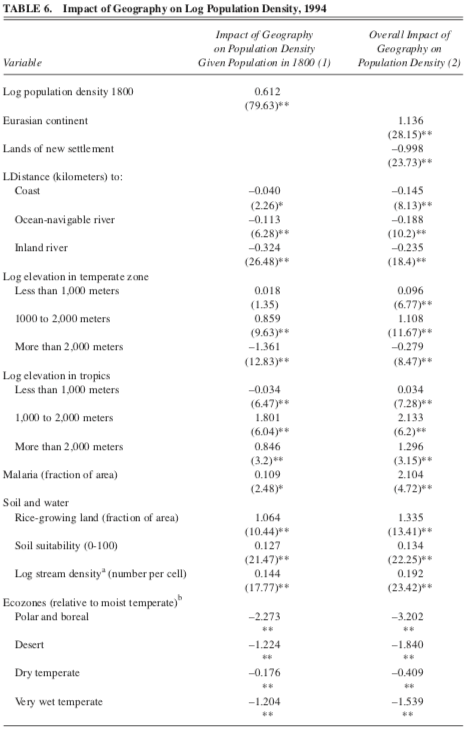
Gallup, John Luke, Jeffrey D. Sachs, and Andrew D. Mellinger, 1999, "Geography and Economic Development," International Regional Science Review 22(2): 179-232
So How Bad is All This for Development? II
“[T]he policy implications of these findings, if the findings are true, are staggering. Aid programs should be rethought, and the crucial issue of migration should be brought into much sharper focus.”
“The research agenda needs to be reshaped in light of the importance of geographic variables. We know precious little about the underlying relationships between climate and agricultural productivity, disease vectors, and public health. Not only do we not know the costs of malaria in terms of economic development but we barely know the quantitative extent of the disease. Cause-of-death data are not available for most developing countries and even fewer data are available on illness. We lack basic data on transport costs that are comparable across countries and, even more important, within countries between hinterlands and urban areas. By neglecting geographic variables, we may overstate the role of policy variables in economic growth and neglect some deeper obstacles (although, because policy variables are often so poorly measured in cross-country work, there is an inherent downward bias due to measurement errors),” (p.212).
Gallup, John Luke, Jeffrey D. Sachs, and Andrew D. Mellinger, 1999, "Geography and Economic Development," International Regional Science Review 22(2): 179-232
So How Bad is All This for Development? III
“The twenty-eight landlocked countries outside Europe, containing 295 million people in 1995, are among the poorest in the world, with an average per capita income of $1,673. In many cases, the infrastructure linking these countries to world markets is seriously deficient. Coastal countries harass landlocked countries, neglect the road networks that would link them to the coast, or impose punitive effective taxation through transit and port charges. In some cases, heated political clashes have taken place between interior and coastal countries. Bolivia and Chile, for example, still lack diplomatic relations 119 years after the War of the Pacific cost Bolivia its coastline. Aid programs to improve transport infrastructure linking landlocked countries to ports almost necessarily require the cooperation of several countries,” (pp.213-214).
“Second, policy makers should examine the likelihood and desirability of large-scale future migrations from geographically disadvantaged regions. Suppose that sizable populations face local cost or disease conditions that prohibit economic growth. The result is likely to be growing pressures for mass migration, first within countries, then across national borders, and finally internationally,” (p.214).
Gallup, John Luke, Jeffrey D. Sachs, and Andrew D. Mellinger, 1999, "Geography and Economic Development," International Regional Science Review 22(2): 179-232
So How Bad is All This for Development? IV
“Finally, donors should reexamine the balance of aid between policy-based lending to individual governments—which is the most popular form—and greatly enhanced aid for basic research on tropical agriculture and tropical public health. Our results suggest that the tropics are damned not just, or even mainly, by bad policies but by difficult inherent conditions. If this is the case, the relentless focus on policy reform may be misguided. A more effective approach to controlling malaria might do more to improve the economic environment—and incidentally, might improve policy by enhancing the incentives for good policies facing the sovereign,” (p.215).
Gallup, John Luke, Jeffrey D. Sachs, and Andrew D. Mellinger, 1999, "Geography and Economic Development," International Regional Science Review 22(2): 179-232
The Flipside
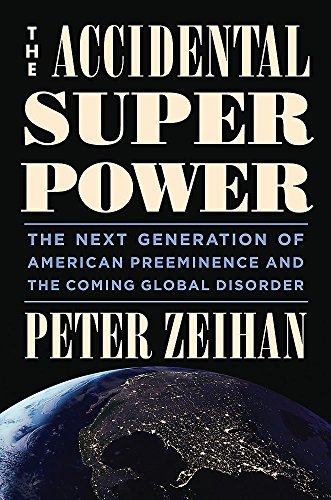
“[T]he Mississippi is only one of twelve major navigable American rivers. Collectively, all of America’s temperate-zone rivers are 14,650 miles long. China and Germany each have about 2,000 miles, France about 1,000. The entirety of the Arab world has but 120...”
“Even catastrophic losses abroad would never actually harm the base of American power, rooted as it was in the charmed nature of American geography. If Britain lost its empire, it was reduced to secondary-power status. If the Maginot Line were breached, France would fall. If the Americans lost every scrap of land they held internationally, they would still be the most powerful country in human history...”
A good review of the book, which I have not yet read.

